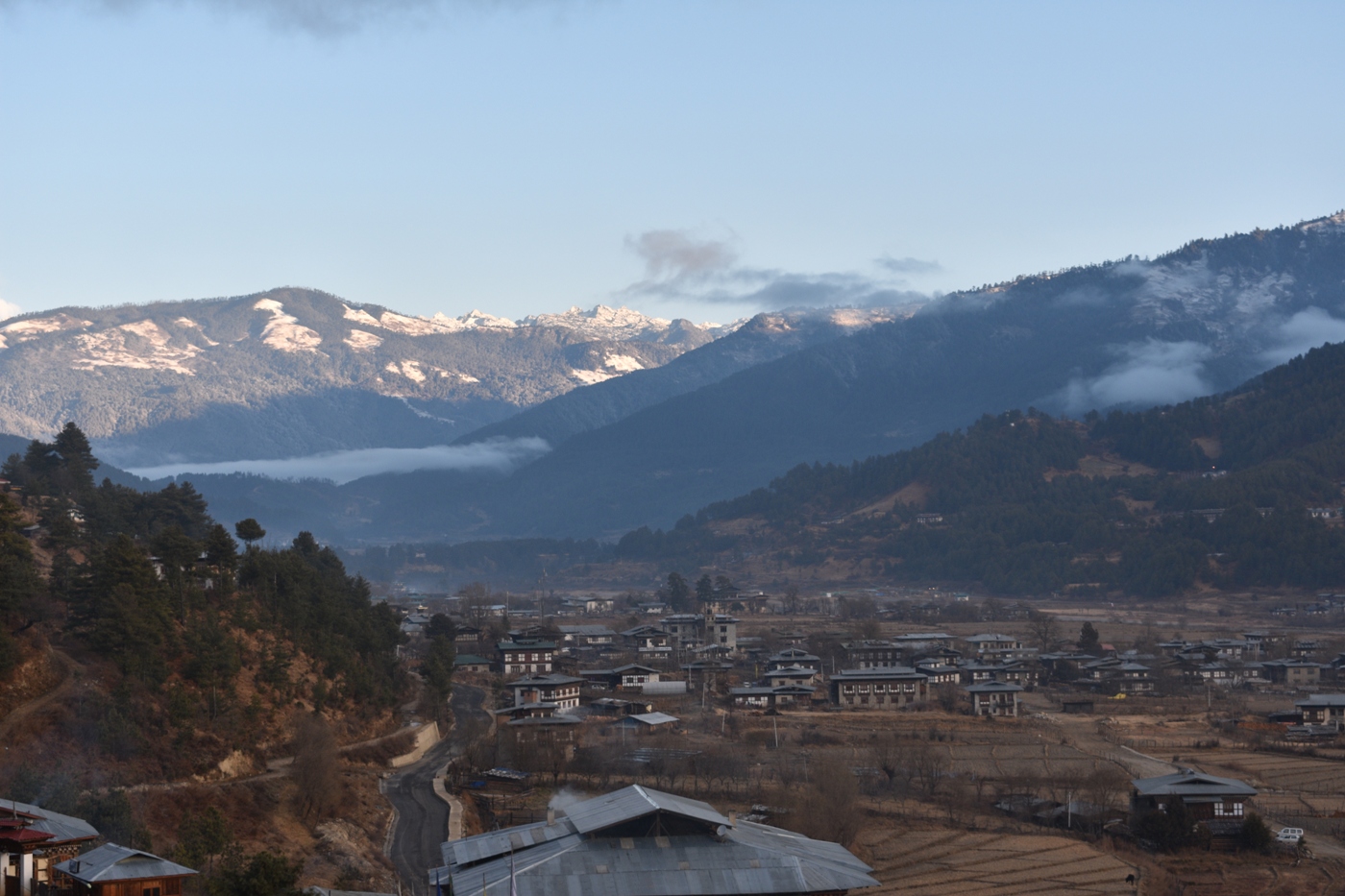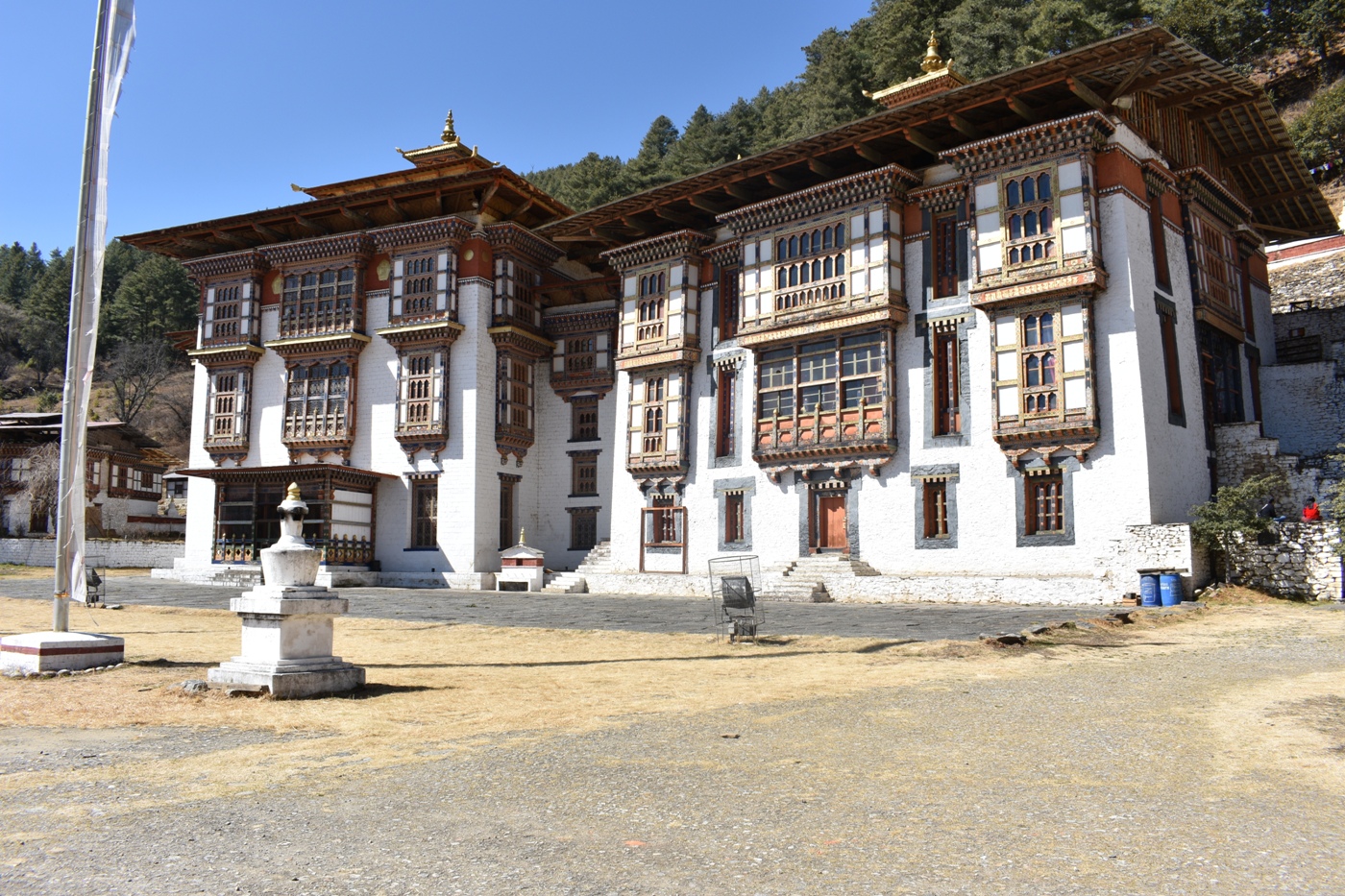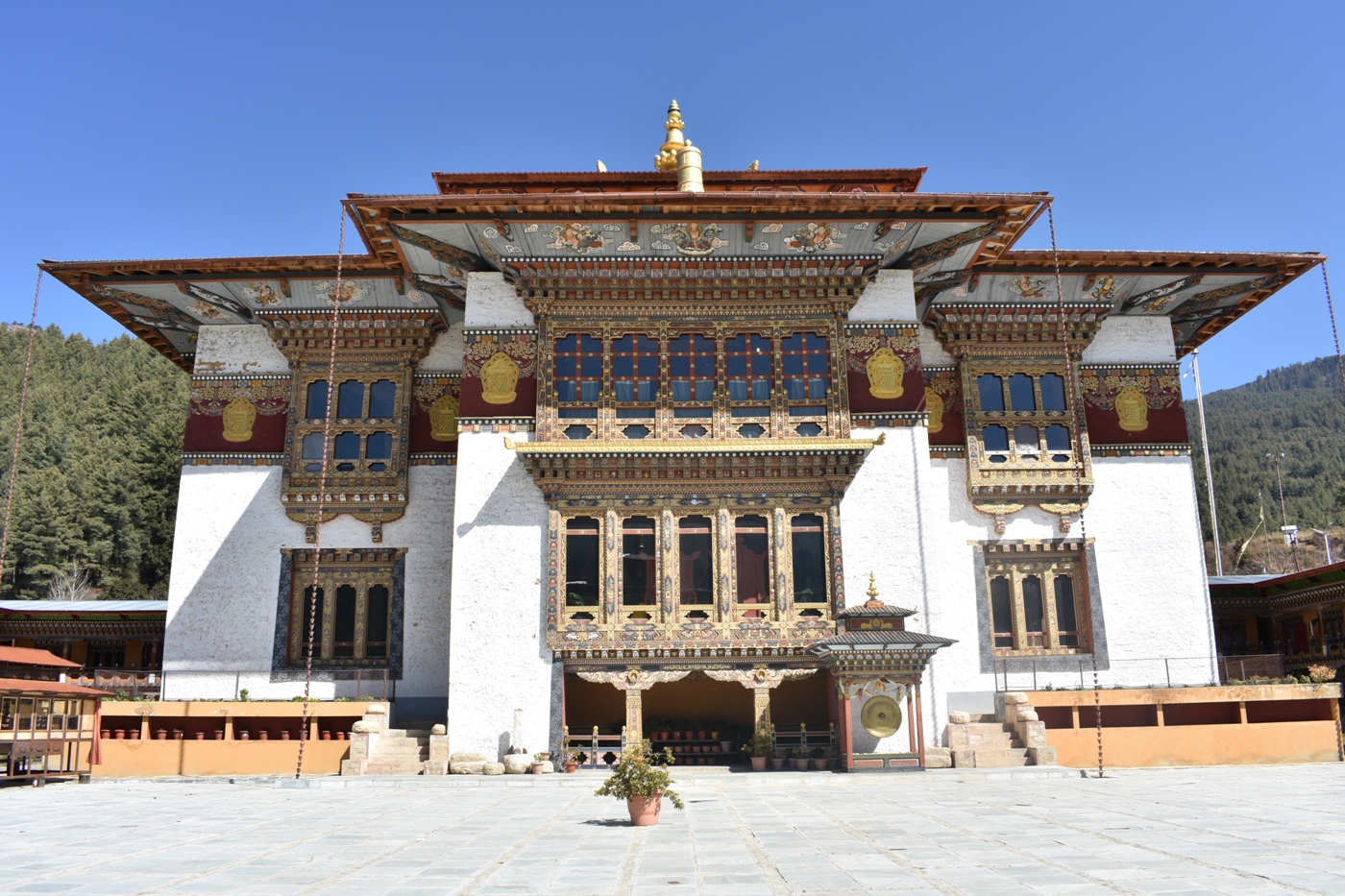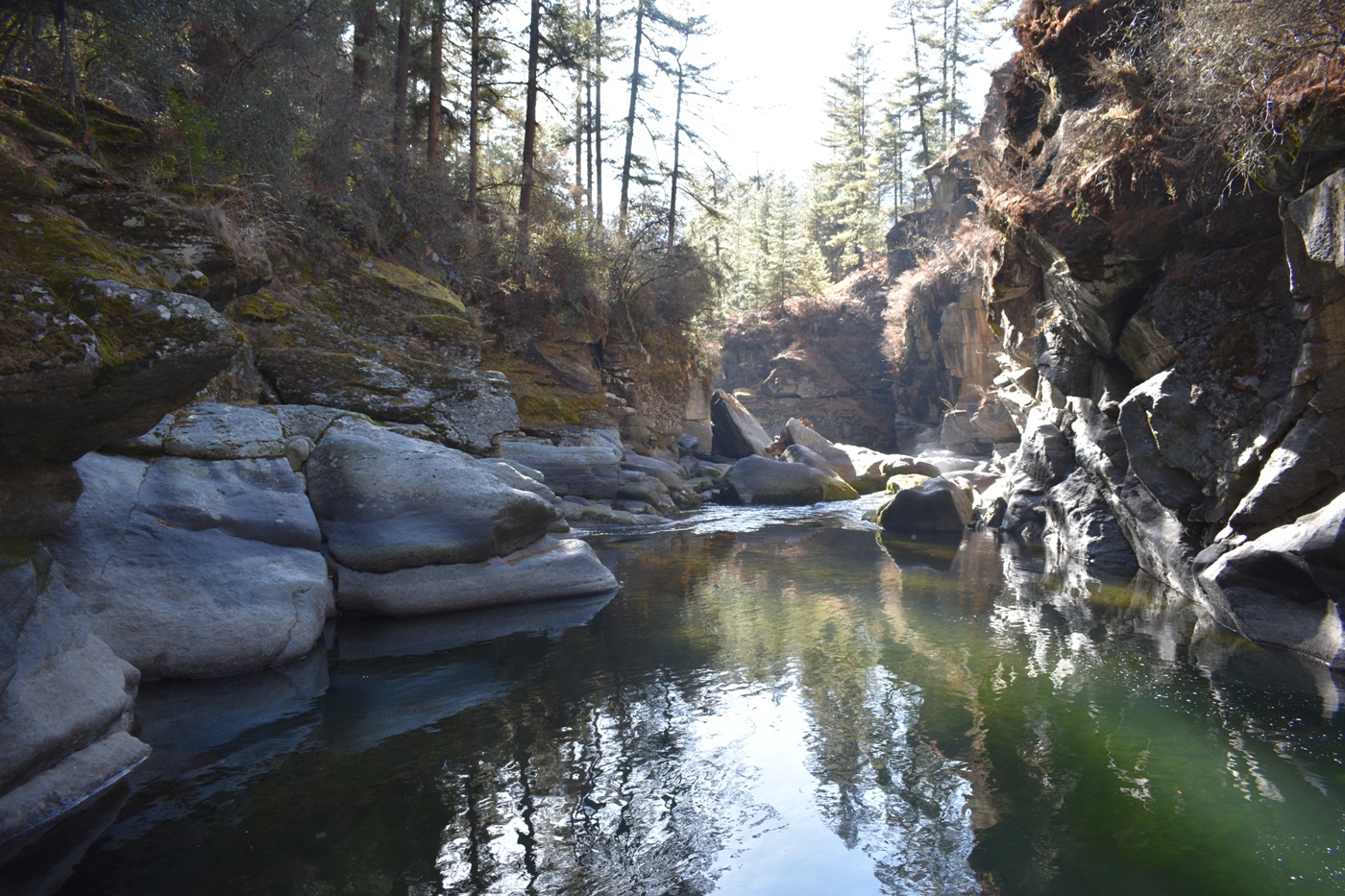Central Bhutan Region
Traveling towards the northern central region in Bhutan leads you to one of the most fascinating parts of this country. Collectively known as Bumthang, it comprises four small valleys – Tang, Ura, Choekhor and Chumey. The mountains, green farms, rivulets and small waterfalls add to the beauty of this province. This region is the religious heartland of the nation and home to some of its oldest Buddhist temples and monasteries.
This Central region of Bhutan is blessed with great natural beauty.
Bumthang (Jakar)
Bumthang is probably the holiest valleys in Bhutan. Shrouded in mythical and spiritual folklores, it is one of the most beautiful valleys in Bhutan. It is about two and a half hours drive from Trongsa to Bumthang. Located at an elevation of 8530 – 13125 feet above sea level Bumthang refers to a region of four valleys – Chumey, Choekhor, Tang and Ura. Bumthang is also the traditional home of the great Buddhist treasure revealer and teacher PemaLingpa whose reincarnation is manifested today in three forms body, speech and mind. Because of its many religious sites, Bumthang has the maximum number of villagetshechus (festival) in Bhutan.

The word Bumthang means beautiful field and it is said that the most beautiful girls of Bhutan reside in these valleys. There are many farms in Bumthang producing cheese, apples, honey, potato, rice, buckwheat and other dairy products.
Jakar Dzong
The JakarDzong or the “Castle of the White Bird” dominates the Chamkhar valley and overlooks the town. Constructed in 1549, by the Tibetan Lam NagiWangchuk, the Dzong played an important role as the fortress of defence of the whole eastern Dzongkhags. The Dzong is now used as administrative centre for Bumthang valley, and also houses the regional monk body.
The name Jakar drives from the word Bjakhab, which means white bird.
Jambey Lhakhang
JambeyLhakhang is one of the oldest temples in the Kingdom built by the Tibetan king, SongtsenGampo. This 7th century monastery was one of 108 monasteries built to subdue evil spirits in the Himalayan region. The other is the KichuLhakhang in Paro, believed to have been built on the same day. Its present architectural appearance dates from the early 20th century. However the inner shrine with the Future Buddha is believed to be there some 1400 years ago.
JambayIhakhangDrup is held here every year for five days. Every year thousands of people come here to watch this dance festival.
Kurjey Lhakhang
KurjeyLhakhang derives inspiration from the kur (body) and the jey (print) of Guru Rinpoche and they are preserved inside a cave nestled in one of the most ancient buildings in the temple.

KurjeyLhakhang consists of three temples.
The one on the right was built in 1652 against the rock face where Guru Padmasambhavameditated in the 8th century.
Second temple is built on the site of a cave containing a rock with the imprint of Guru’s body and is therefore considered the most holy.
The third temple was built in 1990s by AshiKesangWangmoWangchuck, Grand-Queen Mother. These three temples are surrounded by a 108 chorten wall.
Kurje is very special as the kings of Bhutan and other Royal Family members are cremated here.
Tamzhing Lhakhag
TamshingLhakhang is located across the river from KurjeLhakhang. This temple was founded in 1501 by TertonPemaLingpa, a re-incarnation of Guru Padmasambhava. The monastery has very ancient religious paintings like 1,000 Buddhas and 21 Taras (female form of Buddhistava). The temple was restored at the end of the 19th century.
Ngang Lhakhang
This temple dates from the 15th century was founded by Lama NamkhaSamdup, a contemporary of PemaLingpa. This temple is a few hours’ walk from ThangbiGompa, situated about 100m above the valley floor in the small region of Ngang Yule (“Swan Land”). This site was visited by Guru Rinpoche.
Thangbi Goemba
A walk of about 30 minutes north of KurjeLhakhang leads one to this monastery. It was founded in 1470 by Shamar Rinpoche of the Karma Kagyupa religious school. The temple has two sanctuaries and a temple of terrifying deities. The sanctuary on the ground floor contains statues of the past, present and future Buddha and three clay statues probably dating to the end of the 15th century. On the upper floor, the vestibule contains two remarkable paintings of Guru Rinpoche’s heaven, and the Buddha Amitabha’s heaven.
Konchogsum Lhakhang
Konchogsum Lhakhang (called Tsilung or Choekhor in the texts) dates, according to the saint Pema Lingpa, as far back as the 8th century. The temple is supposed to have been built by the Tibetan king Trisong Detsen after receiving instructions fromGuru Rinpoche to do so. The king sent one Bami Trisher from central Tibet to supervise the construction and Guru Rinpoche himself is said to have designed and consecrated the temple.

In February 2010 Könchogsum Lhakhang was severely damaged by fire and has since been rebuilt. The new temple and monastery was consecrated in November 2014.
Ura Valley
Ura is located about 48km from Jakar town with the drive of 1hr 30 minutes to reach. The road crosses Ura-la pass (3,600m), on the approach to which there is a magnificent view of Mt. Gangkar Puensum.
Villages in Ura have clustered houses, which is quite unusual in Bhutan. Above Ura village (3,100m) is a new temple dedicated to Guru Rinpoche. Inaugurated in 1986, it contains a huge statue of the master and remarkable paintings of the cycle of his teachings. Since last 25 years Ura has been transformed from a marginal community to prosperous valley.
Tang Membartsho (The Burning Lake)
MebarTsho is considered one of the most sacred sites in the region as it is related to the renowned religious treasurer (Terton) TertonPemaLingpa. PemaLingpa is considered an incarnated disciple of Padmasambhava who discovered treasure within the lake in late 15th century.

The Burning Lake, MebarTsho is located along the way to the Tang village over the feeder road under Bumthang valley. It takes approximately thirty minutes’ drive to theMebarTsho from Chamkhar town.
According to legend TertonPemaLingpa had a vision of the sacred treasures that Guru Rimpoche had hidden within the lake centuries earlier. However, the people of Tang and the local ruler were cynical of his claims. In order to prove his claims, PemaLingpa held a butter lamp in his hand as he jumped into the lake. After remaining under water for a long time he re-emerged holding a chest and a scroll of paper with the butter lamp held in his hand still burning bright. Thereafter, the lake came to be known as Mebartsho (the burning Lake).
